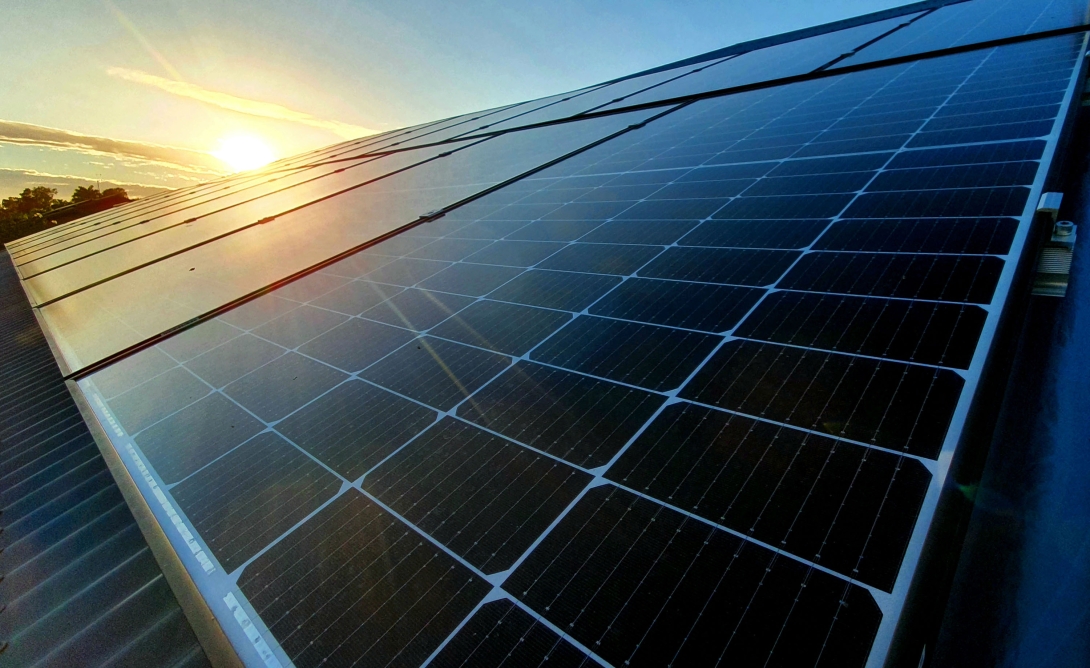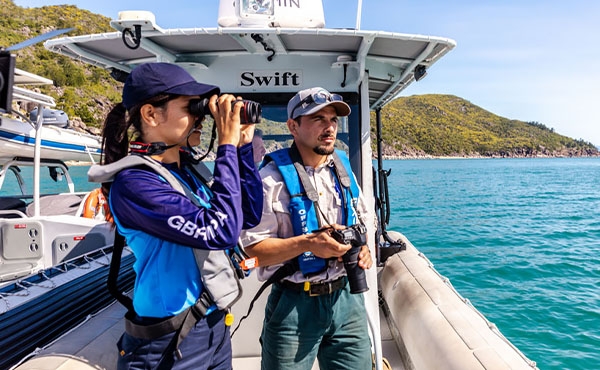Climate change is considered the greatest threat to the values of the Region,5 and the ecological impacts of climate change are expected to have cascading social and economic consequences. Urgent global action is critical to deliver on international commitments to limit temperatures to 1.5 degrees Celsius of warming, or as close as possible, to minimise impacts to the Reef.1097,1100 Management and policy responses related to climate change fall into two broad categories: mitigation and adaptation. Mitigation policies aim to limit the extend of global warming and climate change. Adaptation policies aim to assist existing ecosystems and communities to adjust to the expected regional and local impacts of climate change.

The effectiveness of global actions to mitigate climate change will be the primary determinant to climate impacts on the Reef. Abating the deterioration of the Reef’s ecosystem and heritage values demands significant global action to reduce greenhouse gas emissions to limit future global warming and associated changes to the global climate and regional weather patterns. The Paris Agreement, under the United Nations Framework Convention on Climate Change, provides the international framework under which actions to mitigate global climate change impacts are occurring. The Paris Agreement sets an ambitious target to keep global temperature increase to well below 2 degrees Celsius and pursue efforts to keep warming below 1.5 degrees Celsius above pre-industrial levels.
The Australian Government has the primary responsibility for addressing climate change mitigation, nationally. In 2022, Australia submitted an updated Nationally Determined Contribution with increased emission reduction targets for 2030 of 43 per cent below 2005 levels, and a target of net zero by 2050. This represents a 15 per cent increase on its previous 2030 target. These targets are now enshrined in legislation following the Climate Change Act 2022 (Cth), which operates as ‘umbrella’ legislation to implement Australia's net-zero commitments and codifies Australia’s net 2030 and 2050 greenhouse gas emissions reductions targets under the Paris Agreement. Under the Queensland Climate Action Plan, the Queensland Government set a 50 per cent renewable energy target by 2030, a 30 per cent emission reduction below 2005 levels by 2035, increasing to a 75 per cent emission reduction below 2005 levels by 2030 and net zero emissions by 2050. In April 2024, the Clean Economy Jobs Act 2024 (Qld) was passed to legislate these emissions reduction targets.
Emissions reductions targets are now enshrined in the Climate Change Act 2022 (Cth) and the Clean Economy Jobs Act 2024 (Qld)
Under the Paris Agreement, countries are not required to measure, report and commit to reducing greenhouse gas emissions that occur outside their own borders (for example, excludes the overseas use of fossil fuels exported from Australia). In 2022, overseas emissions that originated from the use of Australian exported coal and gas were estimated to be more than double the amount generated by the Australian economy.1983 Detailed analysis of this aspect of global climate policy was not in scope for the management effectiveness assessment.
Australia is leading the International Partnership for Blue Carbon, which is an initiative that seeks to protect, sustainably manage and restore global coastal blue carbon ecosystems and this contributes to climate change mitigation.
The Reef Authority’s Position Statement on Climate Change (2024) 1100 clearly states that climate change is the greatest threat to the Reef, and only the strongest and fastest global action to decrease greenhouse gas emissions will reduce the risks and limit impacts to the Reef. The Reef Authority has limited jurisdictional responsibility for directly addressing the drivers of climate change, such as the mitigation of global greenhouse gas emissions. Even with strong global action to reduce emissions, the impacts of climate will continue to increase over coming decades due to past emissions.
Considerable efforts are being made under the Reef 2050 Plan to reduce the impacts of other pressures to help reefs cope with or recover from disturbances due to the impacts of climate. The updated Reef 2050 Plan introduced a work area dedicated to addressing climate change with specific goals and strategic actions outlined for climate change mitigation, emissions reductions and climate change adaptation.
The Great Barrier Reef Blueprint for Resilience (2018) 1387 had a key initiative titled ‘Accelerating actions to address global climate change’, that aimed to see the Reef and coral reefs globally as a focus of policy discourse, with programs to reduce carbon emissions, and with Reef communities and industries demonstrating leadership in emission reduction efforts and climate change adaptation. A complementary initiative was ‘Fostering partnerships for local action and innovation’, which aimed to see individuals, industries and communities who are aware of the challenges facing the Reef, participate in efforts to protect it, and inspire intergenerational change. This is evident within the Reef Guardian Councils through their operations and engagement with the community. In early 2024, the Reef Blueprint 2030 — Great Barrier Reef Blueprint for Climate Resilience and Adaptation (Reef Blueprint 2030) was published with updated strategic goals that aim to drive how the Reef Authority adapts its management under a changing climate.1984
The Queensland Government recognises the threats climate change poses to the values of the Reef through the Queensland Climate Adaptation Strategy.1985 As part of its climate change response, it is partnering with the Local Government Association of Queensland to work with local governments to plan for and better manage climate risks and build resilience. This helps to ensure that climate risks are considered in planning and development decisions across Queensland, and that local governments are well positioned to support climate action within their local communities.
The values of the Reef relevant to climate change are well known by managers. The Reef Authority’s Position Statement on Climate Change (2019) 1986 includes description of the values of the Reef and the impact that climate change has on these values. However, progress in understanding the direct, indirect and cumulative impacts of climate change on the Reef has slowed considerably over the past 10 years since the cessation of the Climate Change Group within the Reef Authority. In early 2024, an updated position statement on climate change was published by the Reef Authority.1100
A mix of mitigation, restoration, adaptation, and resilience measures is needed
Overall, the Reef has a complex governance system that was established when there was very limited understanding of the impacts of climate change and it may not be agile enough to adapt to these rapidly evolving impacts. Committed warming due to historical emissions means that climate change mitigation alone will not be sufficient sustain coral reefs under a climate-changed future.1987 Solutions for the Reef must involve a mix of mitigation, restoration, adaptation, and resilience measures.1987 Other key challenges related to the management of climate change impacts on the Reef include a lack of knowledge and understanding of how climate change will impact the Reef across multiple timeframes and emission scenarios, the efficacy of marine and terrestrial interventions under high emission scenarios, and trade-offs between different interventions.


